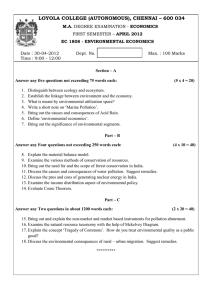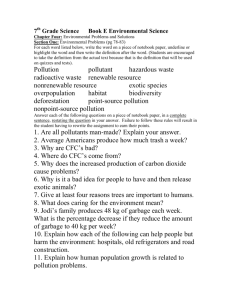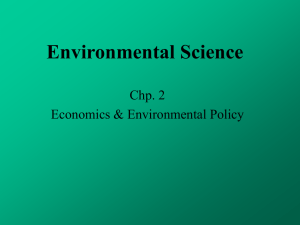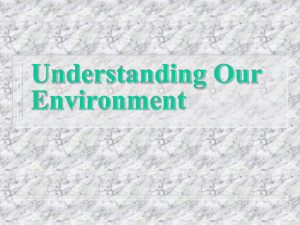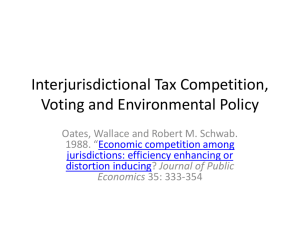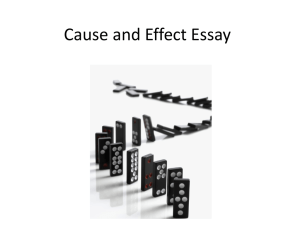Vocabulary terms
advertisement
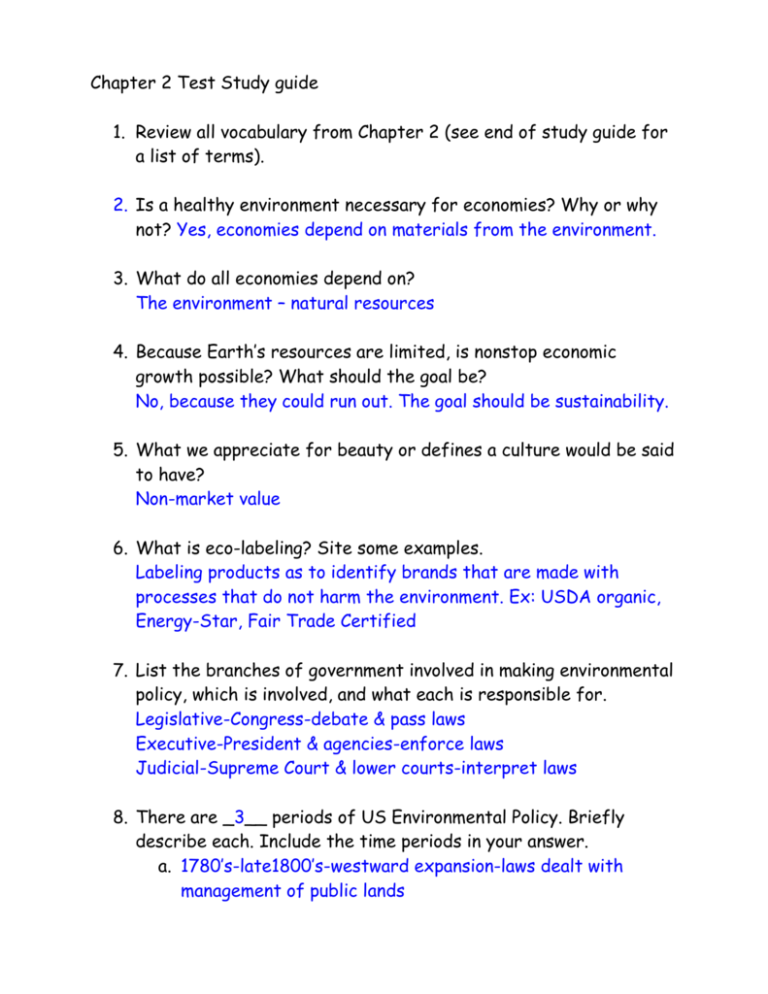
Chapter 2 Test Study guide 1. Review all vocabulary from Chapter 2 (see end of study guide for a list of terms). 2. Is a healthy environment necessary for economies? Why or why not? Yes, economies depend on materials from the environment. 3. What do all economies depend on? The environment – natural resources 4. Because Earth’s resources are limited, is nonstop economic growth possible? What should the goal be? No, because they could run out. The goal should be sustainability. 5. What we appreciate for beauty or defines a culture would be said to have? Non-market value 6. What is eco-labeling? Site some examples. Labeling products as to identify brands that are made with processes that do not harm the environment. Ex: USDA organic, Energy-Star, Fair Trade Certified 7. List the branches of government involved in making environmental policy, which is involved, and what each is responsible for. Legislative-Congress-debate & pass laws Executive-President & agencies-enforce laws Judicial-Supreme Court & lower courts-interpret laws 8. There are _3__ periods of US Environmental Policy. Briefly describe each. Include the time periods in your answer. a. 1780’s-late1800’s-westward expansion-laws dealt with management of public lands b. late 1800’s-mid 1900’s-because the natural resources were over used & environmental problems were starting, the National Park System & Forest Reserve Act enacted c. mid-1900’s-present-pollution created public outcry, EPA was formed because of “Silent Spring” 9. When planning a federal project like a new dam, or highway, what must be done first? EIS – Environmental Impact Statement 10. Which government agency is responsible for overseeing water quality, and air pollution? EPA- Environmental Protection Agency 11. When a government sets rules and assigns punishment for violations this is called? Command & control 12. Taxes that are placed on companies harming the environment are called? Green taxes 13. What is it, when the government encourages an industry, provides money or other things called? subsidy 14. A government decides how many units of pollution are acceptable; permits are sold for that amount of units. Efficient companies may sell excess units to less efficient companies. What is this procedure called? Cap & trade 15. Explain how the environmental policy process is similar to the scientific method. They both follow very similar steps & have a procedure to be followed to get to the end product. 16. What is the mission of the Environmental Protection Agency (EPA)? ESSAY question!! (pg. 46 in text) responsible for conducting & evaluating research, monitoring environmental quality & pollution levels, set & enforce pollution standards 17. Why are international environmental laws necessary? (ESSAY!!) Pollution crosses boundaries/borders, especially air and water. Birds also cross over borders & bring with them contaminants. 18. What was Rachel Carson’s message? (ESSAY!!) DDT was building up in the food chain. Bird’s eggs became brittle & cracked causing the birds to die off. Vocabulary terms: Green tax – Cap and trade – Lobbying – Market failure – Eco labeling – Policy Economics Supply Demand Environmental policy – Cost-benefit analysis Environmental impact statement (EIS) – Ecological economics - Command and control approach – Environmental economics – Subsidy – Non market values –
